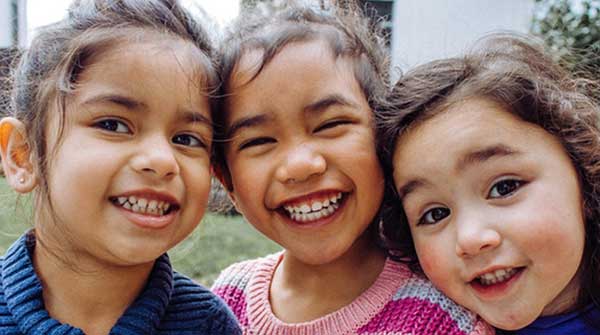By Marni Brownell
Associate professor
University of Manitoba
What happens when authorities determine that children can’t live safely with their own parents or caregivers?
Thousands of Canadian children go into foster homes or other types of out-of-home care on behalf of child welfare agencies. But we don’t know how many, nor do we know how well they are doing.
Canada does not keep reliable national statistics on kids in care, instead relying on provincial reporting. But each province has its own child welfare policy and its own definition of children in care, which may not include other types of out-of-home care, such as care from family relatives (kinship care) or group homes.
It is difficult to know how to improve outcomes for kids in care if we don’t keep track of what is going on. Some analysts say child welfare systems suffer from underfunding, staffing cuts and not enough foster families or resources to support them. But policy makers have a difficult time identifying best practices and deciding what to fund without statistics to measure possible outcomes.
Here’s what we do know:
In 2011, the National Household Survey counted approximately 30,000 foster kids in Canada. This single-day count does not include children in other types of out-of-home care, such as group care. Also, statisticians caution that voluntary surveys such as this often result in less accurate data from low-responding groups such as indigenous peoples, new immigrants and low-income families.
In 2007, the Canadian Child Welfare Research Portal reviewed provincial annual reports and counted more than 65,000 Canadian children in care on a single day.
More recent provincial data tell us that Canada has one of the highest rates of kids in care in the world.
Let’s take Manitoba, which has reliable statistics on the issue. In 2014, Manitoba Family Services reported more than 10,000 children in care. Alarmingly, by age seven, 7.5 percent of all Manitoba children have been in care at some point. Manitoba’s rate of out-of-home care for children under 11 years old was 10 times higher than that of Western Australia. Manitoba rates of care for children during the first year of their lives are also higher than Sweden, Western Australia, England, New Zealand and the U.S.
Manitoba is not alone. For example, in 2013, Association des Centres Jeunesse de Quebec reported 11,250 children in kinship care, foster care and group care. In 2012, the Saskatchewan government reported 6,738 children in out-of-home care.
We also know that not all Canadian children are equally likely to be placed in care. The First Nations Child and Family Caring Society of Canada estimates that indigenous children comprise 30 to 40 percent of kids in care even though aboriginals comprise less than 5 percent of the total population of Canada.
So why does Canada have so many kids in care?
Canada (like the U.S.) favours a “child safety” approach to children’s welfare. This means that if a welfare agency identifies a child at risk, he or she is removed from the home. Child welfare agencies rely on foster homes and other types of placements to provide temporary, day-to-day care for children until the risks of abuse or neglect are resolved. But with so many kids in care, securing quality out-of-home care is a challenge across Canada.
Australia and several European countries take more of a “family welfare” approach. When a child is at risk, the whole family is given intensive home support to try to remove risks while the child stays with the family. Sweden’s child and family well-being policy has made remarkable progress in reducing child poverty and family violence, two major risk factors for child welfare.
It’s time we took a dramatic new approach to kids in care and overhauled our system to focus on preventing rather than reacting to child maltreatment. That requires federal leadership to develop a national strategy that ensures our most vulnerable citizens are treated as valued and respected members of our society.
There is no greater folly than wasting the potential of our children — or worse, putting them at risk.
Marni Brownell is a senior research scientist with the Manitoba Centre for Health Policy (MCHP) and associate professor in the Department of Community Health Sciences, College of Medicine, Faculty of Health Sciences, University of Manitoba.
Marni is a Troy Media contributors. Why aren’t you?
The views, opinions and positions expressed by columnists and contributors are the author’s alone. They do not inherently or expressly reflect the views, opinions and/or positions of our publication.



